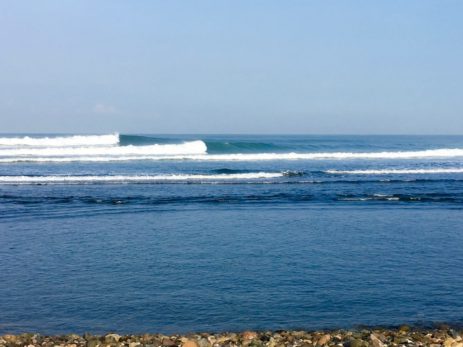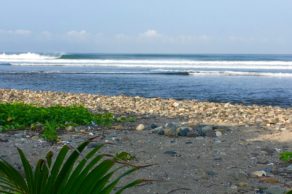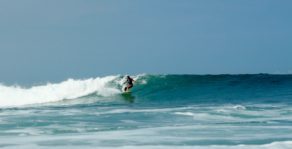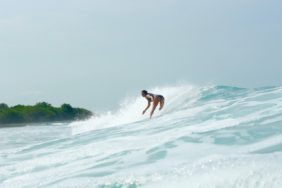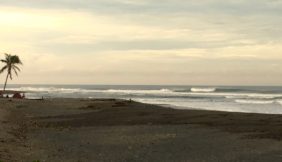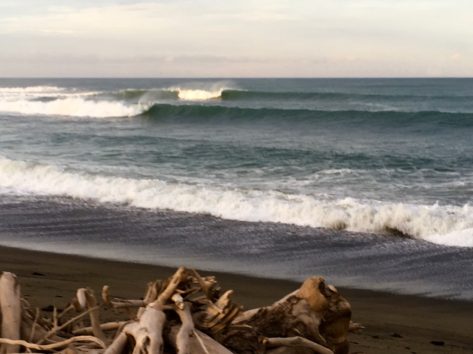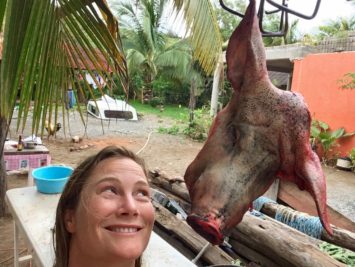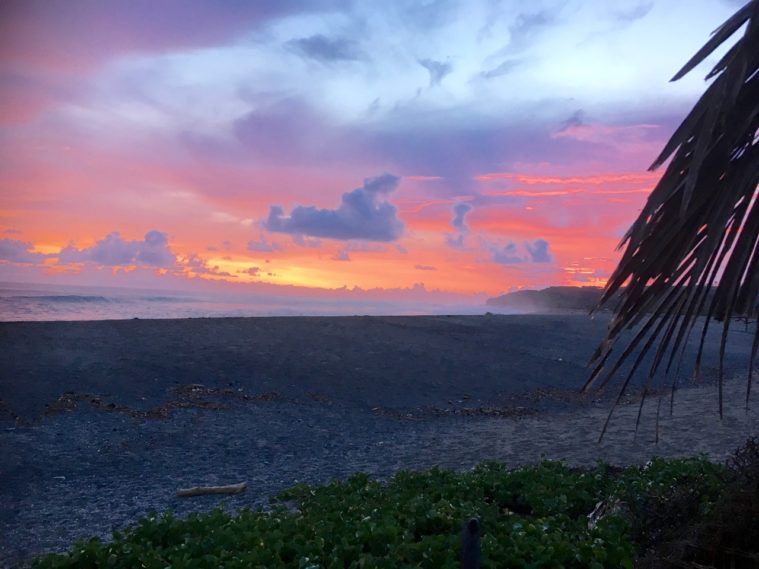I don’t know if I can do this. The voice seemed to emanate from somewhere underneath the black neoprene brace wrapped around my right knee. Clad in several layers of thick Velcro and flanked by rigid metal hinges, my knee felt more vulnerable than it probably was, like a baby suffocated in swaddling clothes.
As I stood at the edge of the beach near the river, contemplating the magnitude of the surf and my knee’s ability to withstand it, a big set swung wide and caught the waiting surfers off guard. They scratched over the crest of the first wave while a second one rose up to meet them. It broke outside, plowing a snowy field of churning, gurgling whitewater over the lineup. Boards bobbed to the surface like corks. A few seconds later, bodies scrambled on top of them, thrashing toward the shoulder of the third wave in the set. One surfer caught it: a faint yellow streak on a wall of steely gray blue water.
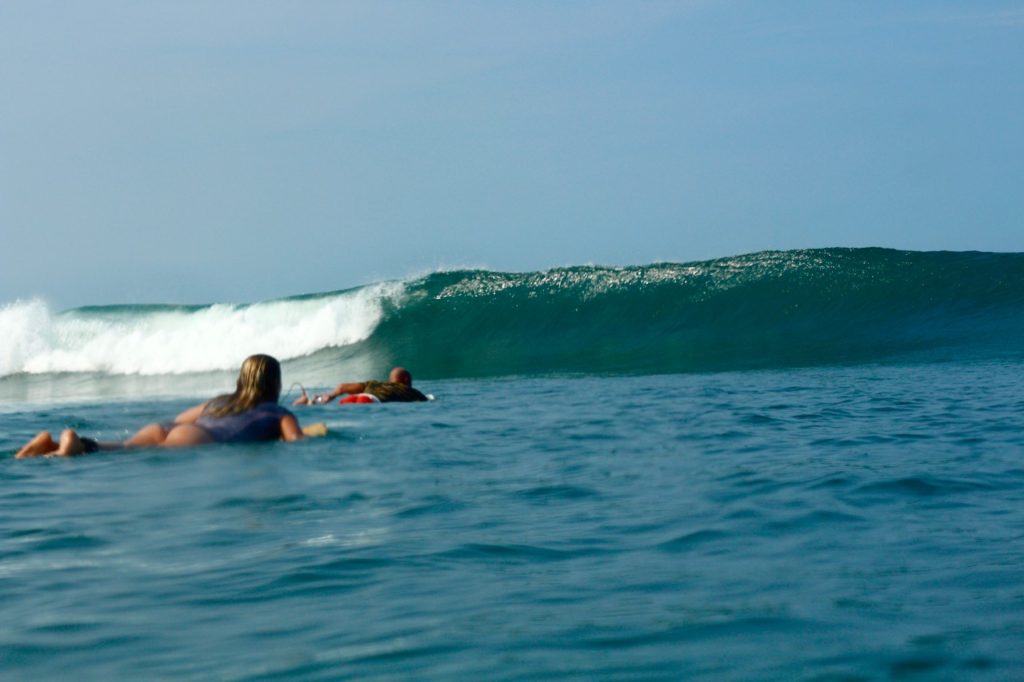
A few weeks earlier, I’d ended the longest stint I’d gone without surfing in ten years, since I first became addicted to the sport. Still a month shy of the date when my doctor said I could start surfing again, I paddled out on my friend Layla’s longboard. The waves were soft and gentle, about waist high: the kind of waves on which I’d be hard pressed to find a way to hurt myself, especially without the strain of a leash on my leg. Day by day, I tiptoed further along the length of the board, testing the limits of my new knee. It felt stiff and weak at first, but little by little, it began to feel stronger.
When the swell picked up a week later, I decided to try a shorter board. I selected a 5’10” fish and took it out for a spin. I duck dove, dropped in, made small experimental turns. After a few days, I felt ready to try a stronger wave. I caught a ride to a place I’d been willfully ignoring since I arrived, unable to bear the knowledge that it was breaking if I wasn’t surfing it. I tried a beefy 6’2” quad fin which I hoped would give me extra paddle power and speed down the line.
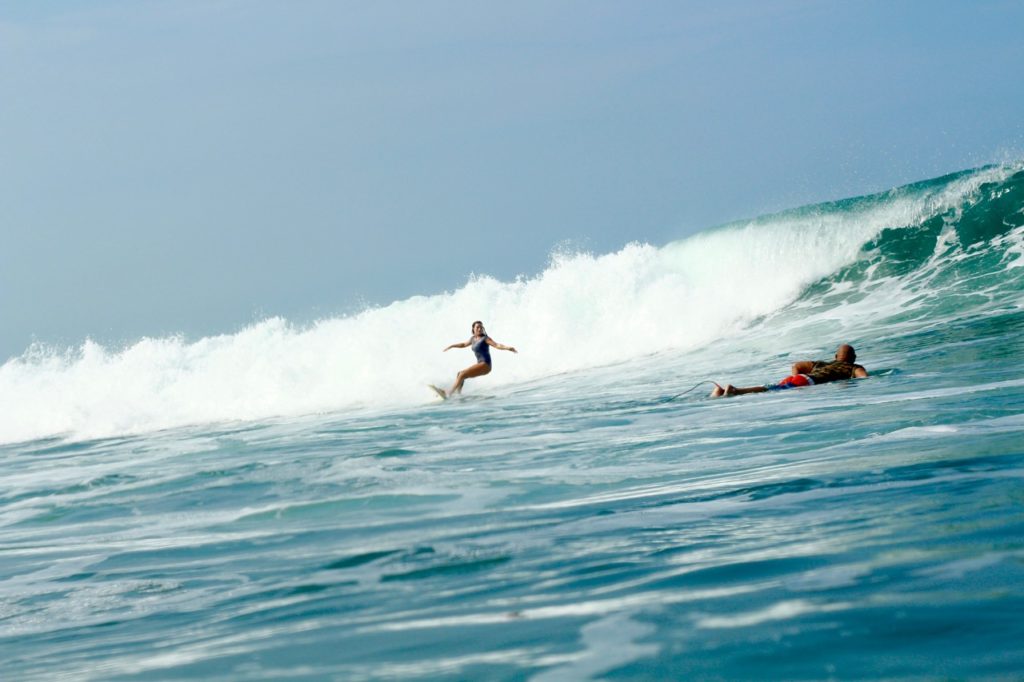
The first wave I tried for was perhaps a foot overhead. I got into it late, and as I angled the board down the face, the wave dropped out from under me. Somehow my body (and even my knee) remembered what to do, unfolding underneath me and stacking smoothly on top of the board. I leaned into a bottom turn and set my line. Soon I was gliding along the face, the four fins driving just as speedily as I’d hoped. When I fell, I hugged my knee to my chest in a pre-emptive, protective jackknife. It felt good to know that I could fall without falling apart.
As the days went by, I progressed to stronger waves. The kind of waves that don’t offer up easy take-offs. I bought a 6’0” shortboard from my friend Mario which worked like a charm. Despite the knee injury, the memory of surfing was ingrained into my body in a way that couldn’t be unlearned, even after so much time spent away.
But paddling out in double overhead waves a scant 5 months after ACL reconstruction on my knee seemed risky, to say the least. Since I hurt my knee last winter, I’d often questioned whether I would take such risks again. But I knew the answer was as fluid and dynamic as the ocean: dependably different, each and every day.
That day, I chose to paddle out. And I remembered why I’ll always feel compelled to take such risks: the voice in my heart that says I can do this.

